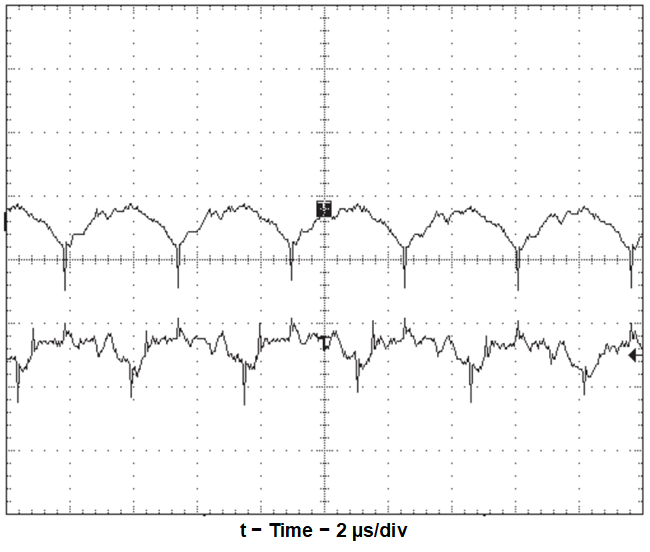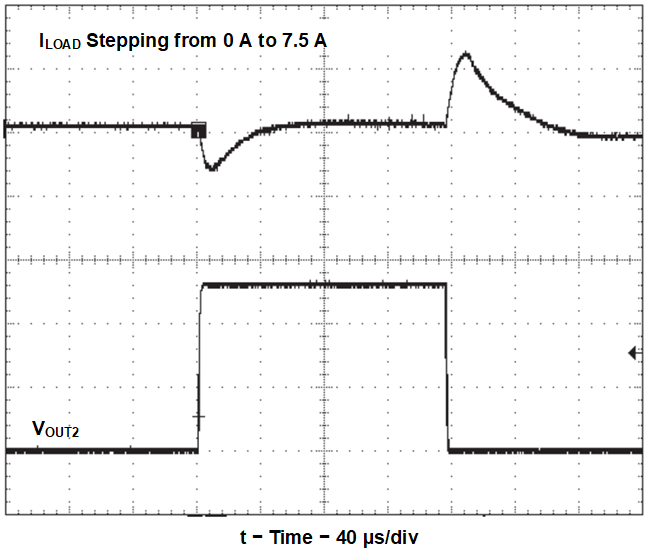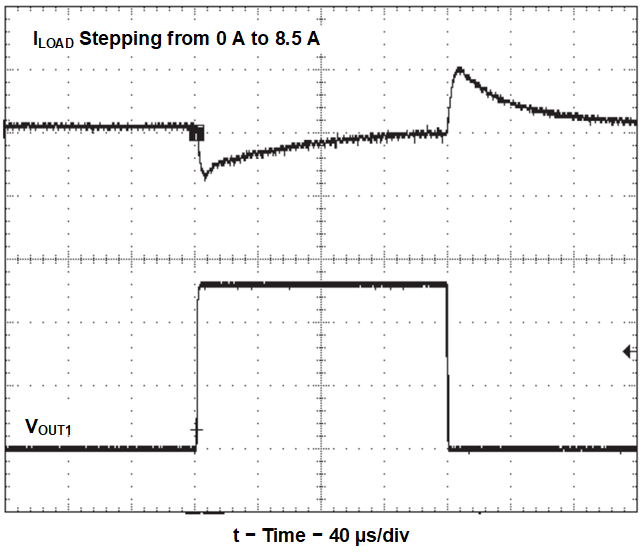SLUU182A January 2004 – March 2022 TPS5124
5.4 Output Ripple Voltage and Load Transient
The output ripple is about 20 mVP−P at 15 A on Channel 1 (3.3 V) output and 15 mVP−P at 10 A on Channel 2 output as shown in Figure 5-6.
Figure 5-7 shows the load transient response. For Channel 1 (3.3 V), when the load steps from 0 A to 8.5 A, the overshoot and undershoot voltages are about 150 mV. For Channel 2 (1.5 V), when the load steps from 0 A to 7.5 A, the overshoot voltage is approximately 220 mV and the undershoot voltage is approximately 140 mV.
 Figure 5-6 Output Ripple
Figure 5-6 Output Ripple Figure 5-8 Load Transient
Response
Figure 5-8 Load Transient
Response Figure 5-7 Load Transient
Response
Figure 5-7 Load Transient
Response